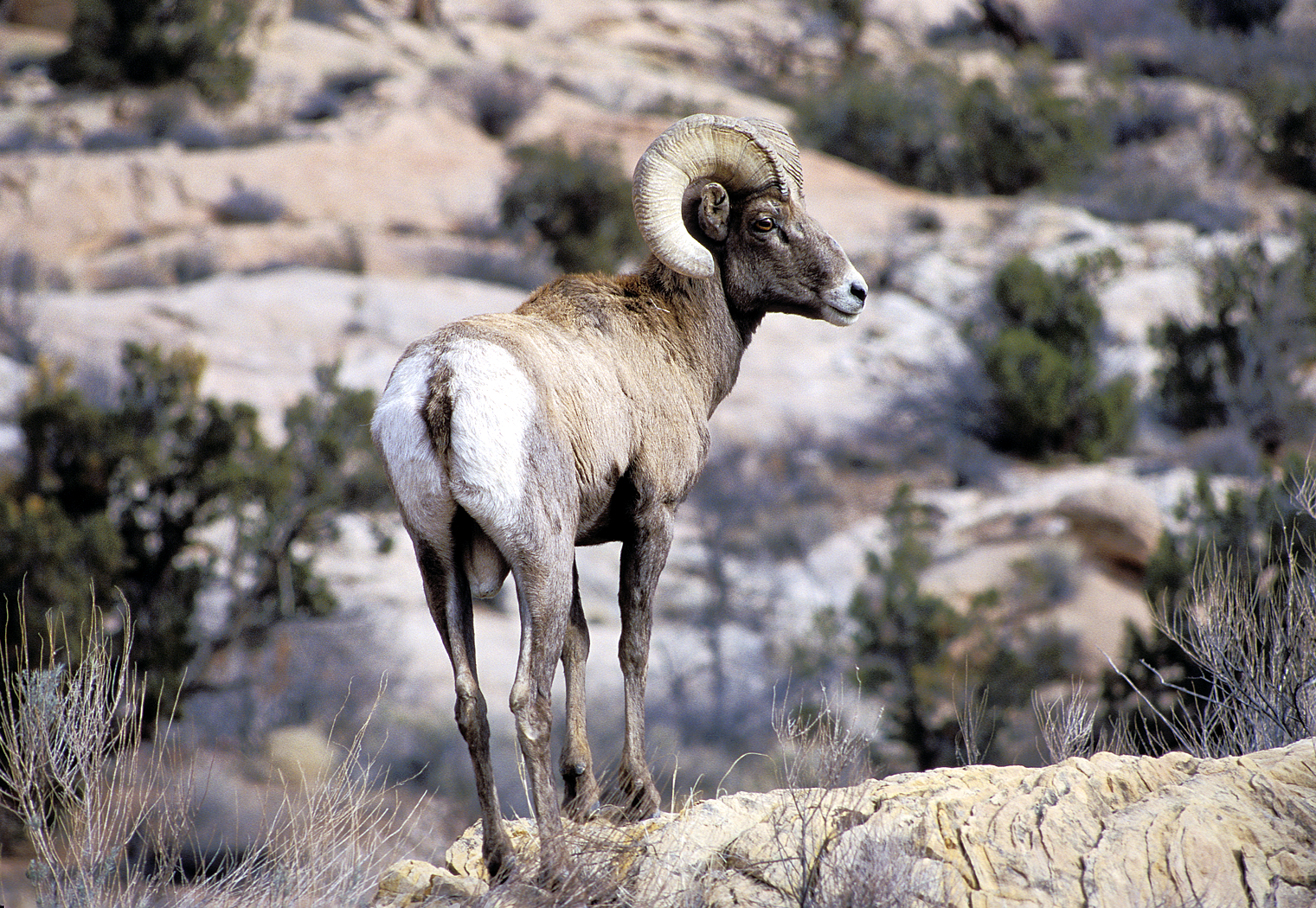One of the most elusive large animals in the Moab area is also one of the most fascinating.
Bighorn sheep are believed to have evolved in North Africa and migrated to the Americas between 11,000 and 2 million years ago, according to the National Park Service. They are the most widely spread species of the Bovine group, which includes cattle, yaks, and water buffaloes.
Desert bighorn sheep are a unique subspecies of bighorn sheep because they have adapted to live in hot, dry climates, unlike their cousins who live in the Rocky Mountains. Desert bighorn sheep are an “indicator species”, in that they provide information about the health of an ecosystem.
Bureau of Land Management (BLM) wildlife biologist Pamela Riddle will be giving a presentation about a desert bighorn sheep GPS-collar project and its influence on habitat-management decisions, on Thursday, July 10 at 6 p.m. as part of the Moab Information Center’s (MIC) 2014 Summer Lecture Series.
The lecture series, sponsored by the Canyonlands Natural History Association (CNHA) and the Museum of Moab, has been running for more than 15 years. It takes place at the MIC on Thursdays from 6 to 7 p.m. This summer, there are 17 lectures scheduled. Lecture topics vary from paleontology, to flowers, to stars, to uranium mining. All presentations are free.
“It’s a great way for people to come together and learn about what we have here – history, resources, everything,” MIC operations manager Sharon Kienzle said.
Riddle, this week’s presenter, has worked for the BLM field office for 11 years. She has a bachelor’s of science degree in Biology and Environmental Science. She worked for the U.S. Fish and Wildlife Service in North Dakota for two years prior to moving to Moab.
Her presentation will focus on Moab’s desert bighorn sheep, their habitat, the recent GPS-collar information the BLM has collected, and some habitat-management decisions that have been made because of that research. She will also touch on the history of bighorn sheep, past and present habitat management, and ongoing issues and concerns related to bighorn sheep in the area.
The BLM is not directly conducting the research but helps fund research projects, proposes research questions, and facilitates the research being done. Two Brigham Young University graduate students are conducting the GPS collar project that Riddle will be addressing in her presentation. Their master’s projects have provided data and information for the BLM to use to make habitat and species-management decisions.
“The bighorn sheep GPS collar project has been one of the more important projects that has helped our office make management decisions regarding bighorn habitat,” Riddle said.
Riddle was asked to present this project at the MIC. She said she has never done something like this before, but she believes it is good to inform the public.
“The BLM is involved in some pretty interesting things and I thought it would be good for the community to know about them,” she said. “I want the community to appreciate, or at least be familiar with, some of the work the BLM is doing to better understand the needs and habits of the wildlife we are mandated to manage.”
The presentation will last for about an hour, and afterwards the floor will be open to questions and comments.
The MIC is partners with the National Parks Service, the BLM, the Forest Service and Grand County. All money collected from sales and donations will go to the public lands. For more information about the Summer Lecture Series, email Sharon Kienzle at Sharon@cnha.org.
“Part of our mission with the Canyonlands Natural History Association is to educate the public and this is one of the ways we do that, “ Kienzle said. “We want everyone to come.”
What: Moab Information Center Summer Lecture Series, desert bighorn sheep
When: Thursday, July 10, 6 p.m.
Where: Moab Information Center, 25 E. Center St.
Cost: Free
“The BLM is involved in some pretty interesting things and I thought it would be good for the community to know about them. I want the community to appreciate, or at least be familiar with, some of the work the BLM is doing to better understand the needs and habits of the wildlife we are mandated to manage.”
BLM biologist to share latest research at MIC talk




